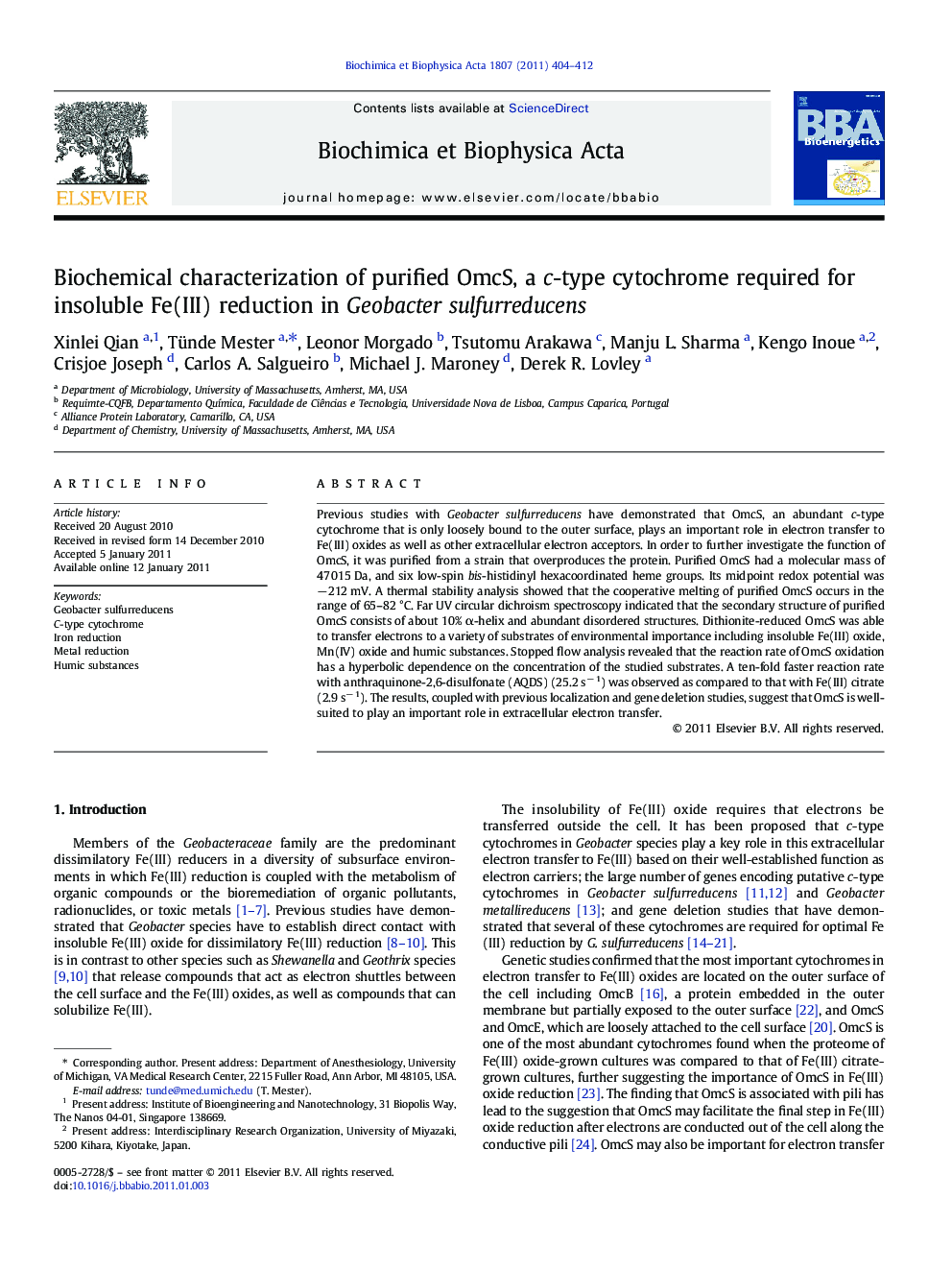| Article ID | Journal | Published Year | Pages | File Type |
|---|---|---|---|---|
| 1942623 | Biochimica et Biophysica Acta (BBA) - Bioenergetics | 2011 | 9 Pages |
Previous studies with Geobacter sulfurreducens have demonstrated that OmcS, an abundant c-type cytochrome that is only loosely bound to the outer surface, plays an important role in electron transfer to Fe(III) oxides as well as other extracellular electron acceptors. In order to further investigate the function of OmcS, it was purified from a strain that overproduces the protein. Purified OmcS had a molecular mass of 47 015 Da, and six low-spin bis-histidinyl hexacoordinated heme groups. Its midpoint redox potential was −212 mV. A thermal stability analysis showed that the cooperative melting of purified OmcS occurs in the range of 65–82 °C. Far UV circular dichroism spectroscopy indicated that the secondary structure of purified OmcS consists of about 10% α-helix and abundant disordered structures. Dithionite-reduced OmcS was able to transfer electrons to a variety of substrates of environmental importance including insoluble Fe(III) oxide, Mn(IV) oxide and humic substances. Stopped flow analysis revealed that the reaction rate of OmcS oxidation has a hyperbolic dependence on the concentration of the studied substrates. A ten-fold faster reaction rate with anthraquinone-2,6-disulfonate (AQDS) (25.2 s− 1) was observed as compared to that with Fe(III) citrate (2.9 s− 1). The results, coupled with previous localization and gene deletion studies, suggest that OmcS is well-suited to play an important role in extracellular electron transfer.
Research highlights► OmcS has low spin, bis-his hexacoordinated heme groups. ► Midpoint redox potential of −212 mV. ► It is able to reduce various soluble and insoluble metals such as iron, manganese, gold, uranium, and humic substances in vitro. ► Stopped flow analysis revealed that the reaction rate of OmcS oxidation has a hyperbolic dependence on the concentration of the studied substrates. ► A ten-fold faster reaction rate with anthraquinone-2,6-disulfonate (AQDS) (25.2 s− 1) was observed as compared to that with Fe(III) citrate (2.9 s− 1).
